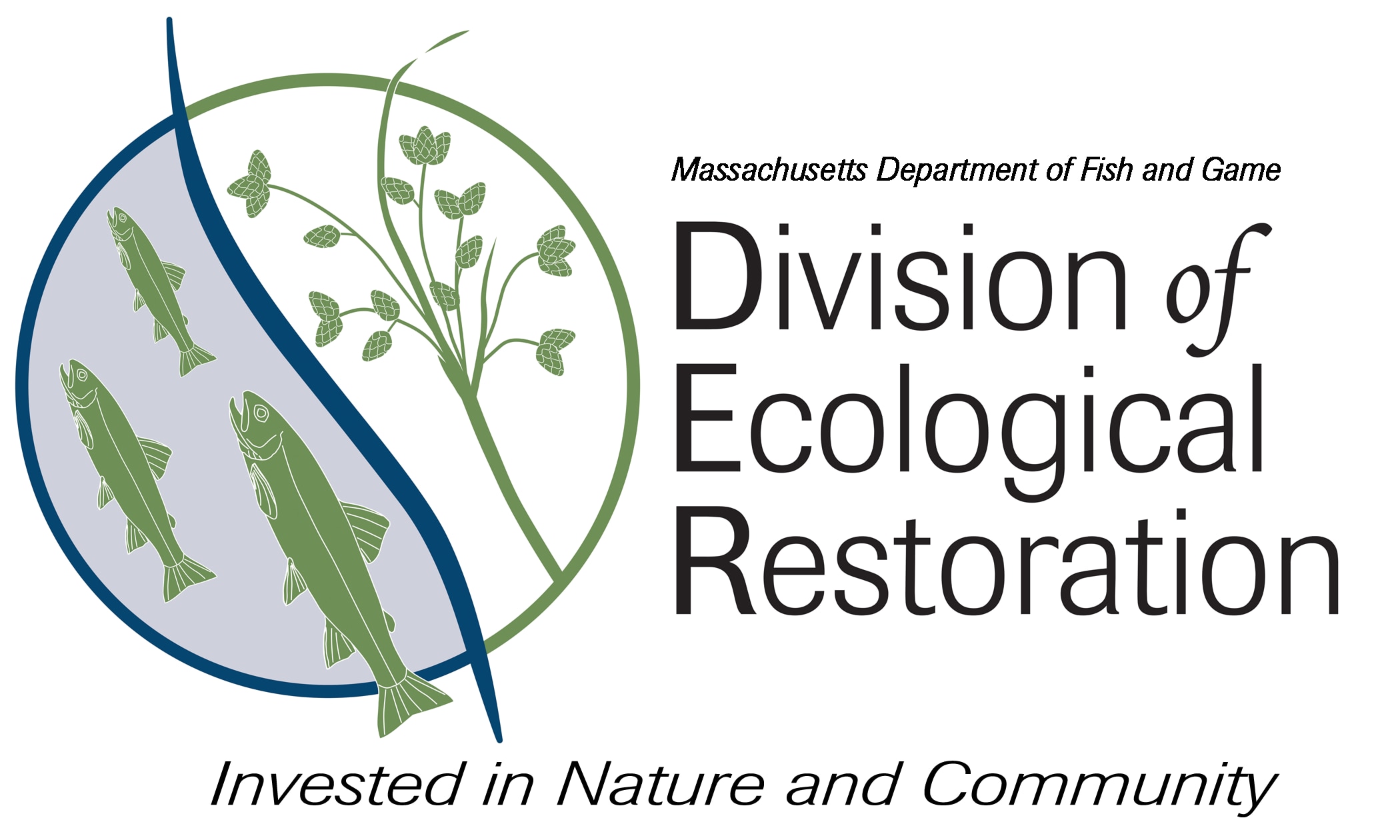- Division of Ecological Restoration

DER estimates that more than half of Massachusetts’ 25,000 culverts and small bridges restrict streamflow, create barriers to fish, and pose a risk to the public due to their vulnerability to failure during storm events. Since its inception, DER has worked with partners across the state to determine the impacts that undersized culverts have on river ecosystems, to develop culvert replacement guidance, and to help cities and towns replace undersized and failing culverts with larger, safer structures.
Fifteen years ago, the Massachusetts Riverways Program (now part of DER) worked with the University of Massachusetts, The Nature Conservancy, and several other state agencies and NGOs to determine the extent and type of barriers that road-stream crossings create for fish and wildlife movement. In addition to developing an inventory and assessment protocol, the partners developed guidance for replacement structures to facilitate the movement of fish and wildlife, as well as the natural stream processes of moving water, sediment and wood. This guidance was released in the 1st edition of the Massachusetts Stream Crossing Handbook.
By 2014, even with new guidance and regulatory standards, most culverts weren’t being replaced to meet these stream crossing standards. DER conducted a survey of municipal road managers to identify the major barriers they face when trying to upgrade culverts. More than 100 municipalities across Massachusetts responded to the survey revealing that municipalities face challenges at all steps in the culvert replacement process.
Challenges faced by municipalities include a lack of in-house expertise with design of culverts; inability to identify which culverts are most vulnerable to washouts; difficulty with the permitting process; and lack of funds for engineering, design and construction. The survey highlighted that more coordinated efforts were needed to assist municipalities. Later that year, in response to the survey, DER launched the Stream Continuity Program with the goal of building municipal capacity to replace undersized and outdated road-stream crossings in areas of high ecological value.
Over the last five years, through the Stream Continuity Program, DER has supported municipal efforts to identify, plan and implement successful culvert replacement projects. DER has built a network of culvert replacement sites across the state to serve as case studies and provide in-depth training opportunities for road managers. These training sites create a regional network of road managers with experience implementing projects to meet the Stream Crossing Standards. To date, 3 municipalities have hosted training sites. In the upcoming year, as these towns actively pursue construction funding opportunities, DER will be gearing up to expand the training initiative to other parts of the state.
In 2017, DER launched the Culvert Replacement Municipal Assistance Grant Program to help municipalities replace culverts with better design crossings. To date DER has provided incentive funding totaling over $2.5 million to 36 municipalities. Three projects have been constructed and 12 projects are almost shovel-ready.
DER continues to develop numerous tools and trainings to address the needs of municipalities across the Commonwealth. In the upcoming years, we hope to increase technical assistance and resources to help towns replace undersized, deteriorated culverts, with larger, safer structures that are resilient to extreme storms and that provide passage for fish and wildlife.
Image: Left to Right: Construction underway on culvert in Mashpee, partially funded by DER; DER leading a training to assess culverts; Undersized culvert in Ashfield that is being used as a DER culvert replacement training site.
